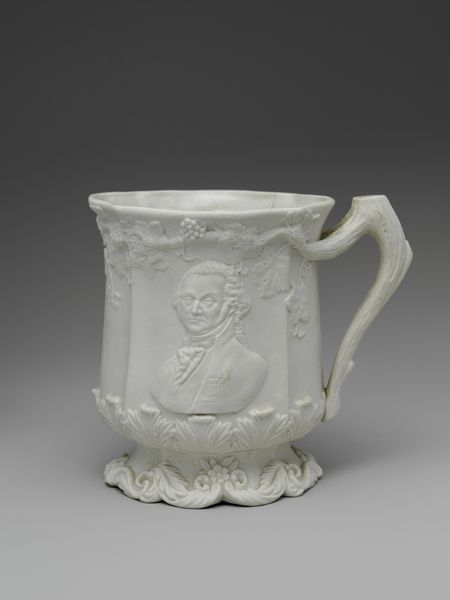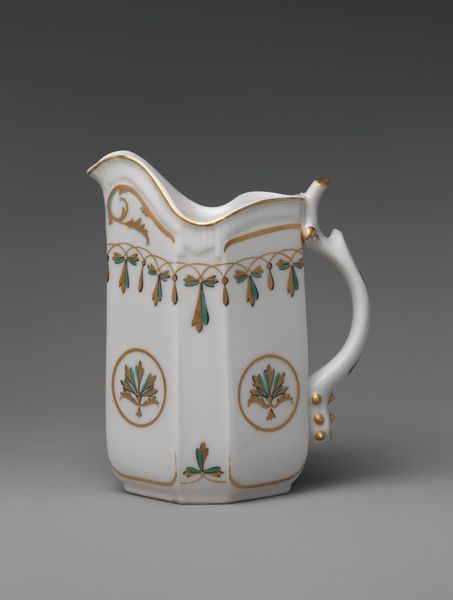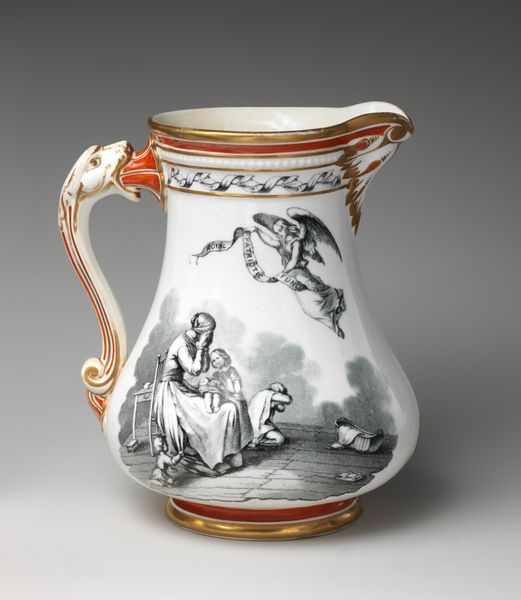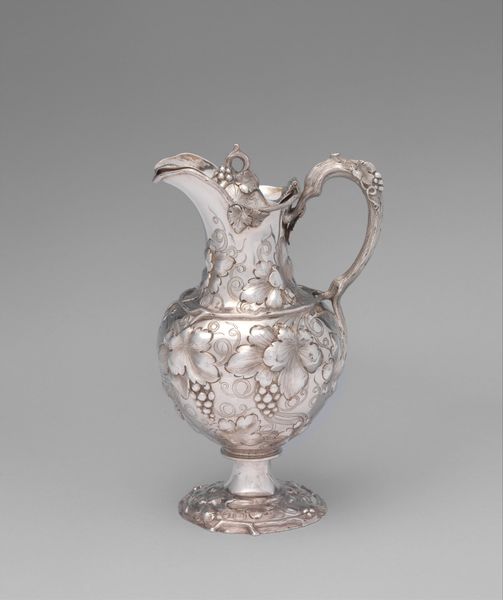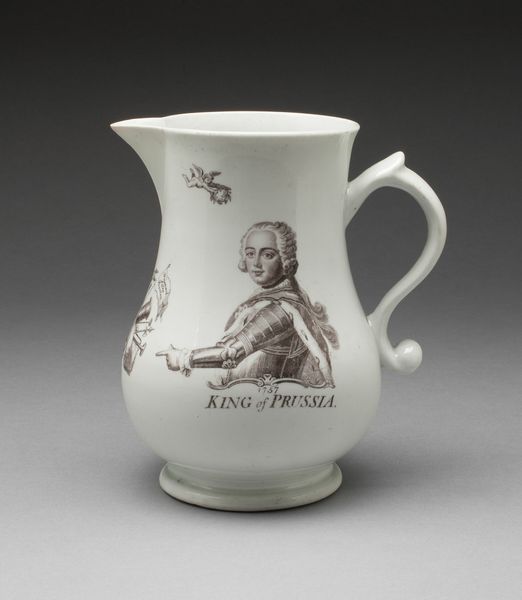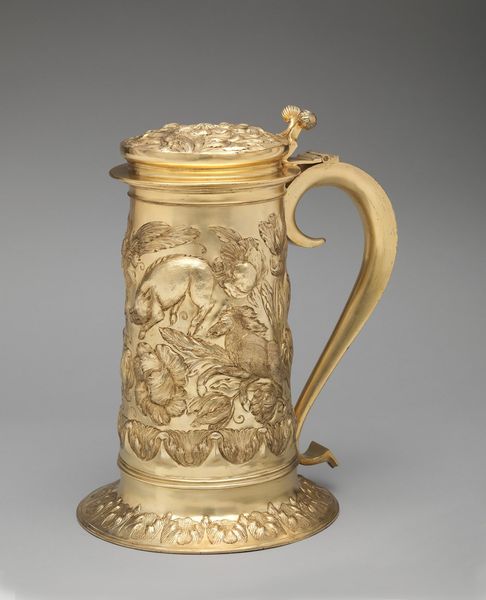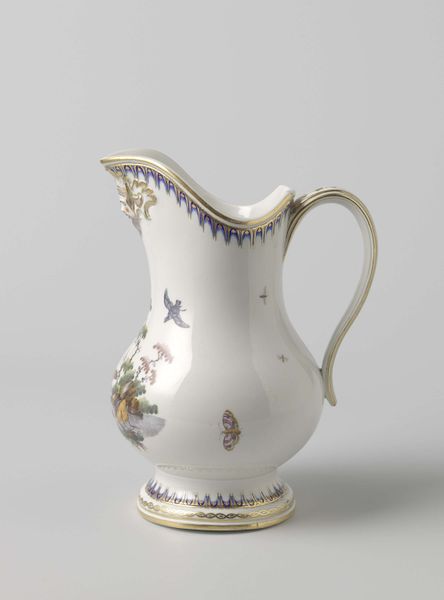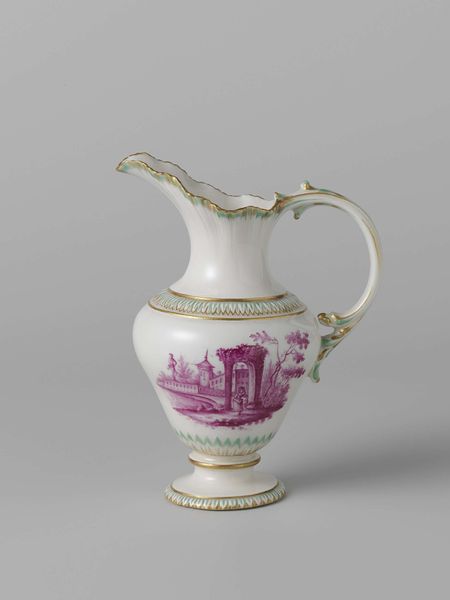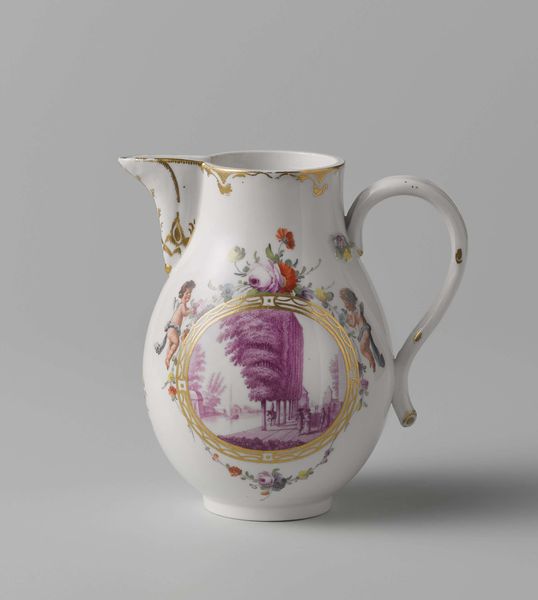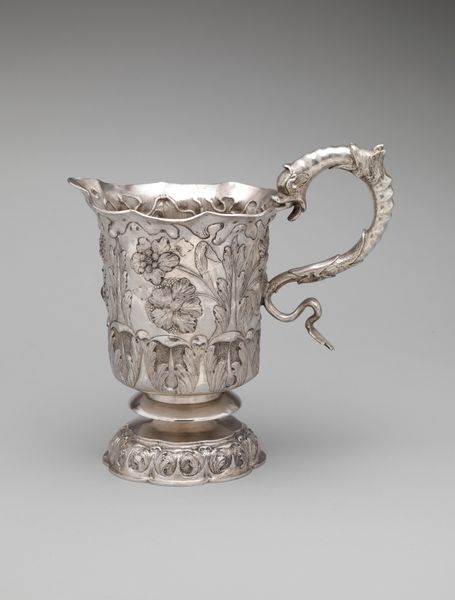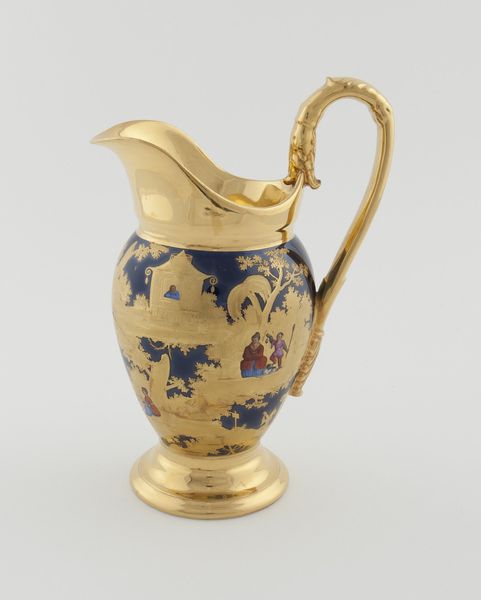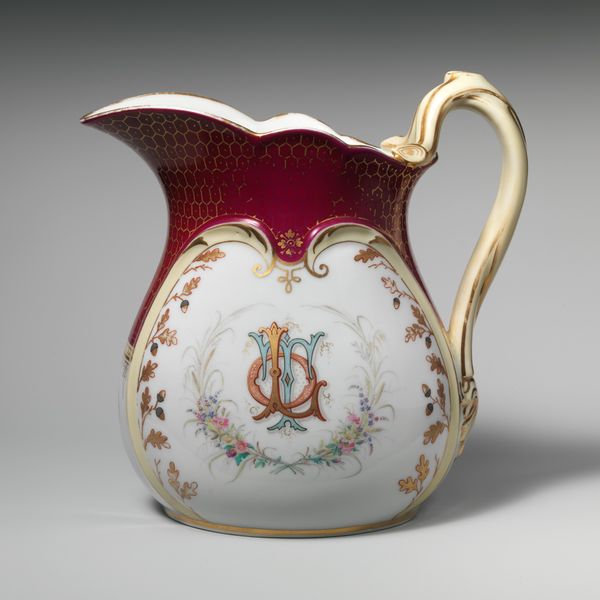
ceramic
#
ceramic
#
stoneware
#
ceramic
#
united-states
#
erotic-art
Dimensions: 4 15/16 in. (12.5 cm)
Copyright: Public Domain
Curator: Immediately, I am struck by its peculiar intimacy – this is not the pitcher of a grand manor but one of more humble, though stylish, origins. Editor: Indeed. This ceramic pitcher, part of the "Alsatian" line by Chesapeake Pottery, dates between 1886 and 1896. It is currently held in the collection of the Metropolitan Museum of Art. Curator: The image of "Jessica" etched into the stoneware feels so specific. Who was she? And why immortalized on this vessel? Editor: Well, the "Alsatian" line was created by the manager of Chesapeake Pottery, David Francis Haynes, which was designed to resemble Limoges faience, employing transfer-printing. The series reproduces, and slightly alters, famous images, texts, and portraits. It appropriates artistic tropes while remaining industrial, using serial production techniques. Curator: So the portrait is likely copied, a mass produced image reflecting Victorian ideals of beauty and femininity but re-circulated through reproductive methods. Is it therefore “Jessica,” a reference, perhaps, to Shakespeare's Jessica from The Merchant of Venice? Or an image representing all young women during the end of the 19th century in the United States? The gaze is assertive, perhaps an early signifier of the “New Woman.” Editor: Right. Mass-produced ceramics like this also point to shifts in class structures and the rise of consumer culture. Previously, such objects were only available to the elite. Now, through industrial means, decorative pottery was more accessible. Consider the social implications of ownership and display within the Victorian home, and its effect on defining "good taste." Curator: And by implication "good class," as decorative objects within the private sphere became potent signifiers of status and cultural capital, influencing even more complex structures of race and exclusion. Editor: Absolutely. Seeing this object in the museum today also prompts reflection on how its meaning has evolved since its production. This type of ceramic embodies the tensions between artistic ambition and commercial drive of the late 19th-century United States. Curator: The layered dialogues – the echo of “Jessica,” the production of the working classes of the Chesapeake pottery, and its appropriation within our own age—are rich with possibility. Editor: I agree. It makes me want to trace back these reproductive economies, consider both where these objects originate and where they wind up.
Comments
No comments
Be the first to comment and join the conversation on the ultimate creative platform.
